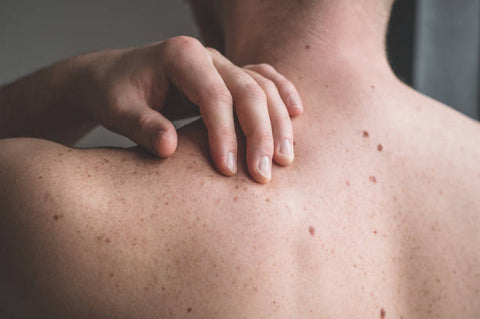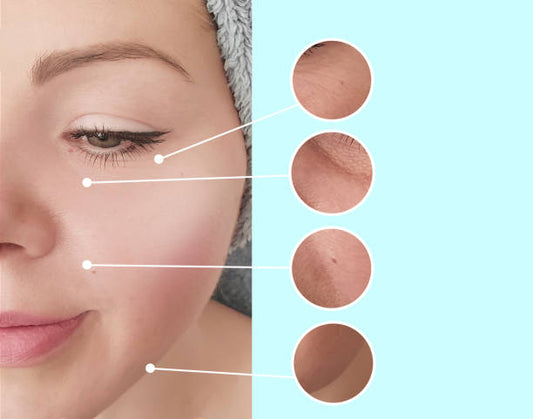Skin cancer is a pervasive and potentially life-threatening disease, characterized by the rapid proliferation of abnormal cells within the body. In the United States, it ranks as the most prevalent form of cancer, with over 3.5 million annual diagnoses. Primarily caused by excessive exposure to ultraviolet (UV) radiation from the sun, tanning beds, and other sources, skin cancer is eminently preventable. Early detection and treatment are paramount. In this comprehensive guide, we'll delve into skin cancer's essential facts, its symptoms, stages, types, and practical methods to safeguard yourself from its risks.

Stages of Skin Cancer
Understanding the stages of skin cancer is pivotal to gauging its severity and planning for appropriate treatment. The stages are as follows:
Types of skin cancer
Skin cancer is one of the most common forms of cancer and can affect people of all ages and skin types. While there are many different types of skin cancer, the most common types include basal cell carcinoma, squamous cell carcinoma, and melanoma. Understanding the different types of skin cancer and how to recognize their symptoms can help you get early diagnosis and treatment.
Basal Cell Carcinoma
Basal cell carcinoma is the most common type of skin cancer and is usually found on areas of the skin that have been exposed to the sun. This type of skin cancer can appear as a small pearly bump, a sore that doesn’t heal, or a raised reddish patch of skin. Basal cell carcinoma does not usually spread to other parts of the body, so it is treatable if caught early.

Learn more about Basal Cell Carcinoma: Symptoms, Causes, Diagnosis, and Treatment.
Squamous Cell Carcinoma
Squamous cell carcinoma is the second most common type of skin cancer and also often occurs on areas of the skin that have been exposed to the sun. This type of skin cancer can appear as a red or scaly patch, a raised bump, or a sore that won’t heal. Squamous cell carcinoma may spread to other parts of the body if left untreated, so it is important to seek medical attention if you notice any of these symptoms.

Explore Diagnosis and Treatment Options for Squamous Cell Carcinoma.
Melanoma
Melanoma is the most serious type of skin cancer, and it can occur anywhere on the body. It is usually characterized by a dark, irregularly-shaped mole that may be new or have changed in size, color, or shape. Melanoma is most likely to spread to other parts of the body if left untreated, so it is important to seek medical attention for any suspicious moles.

Dive deeper into Understanding the Stages of Melanoma Development.
Causes of skin cancer
1. Ultraviolet (UV) Radiation Exposure: The sun's UV rays are the main cause of skin cancer. UV radiation damages the DNA in skin cells and can lead to mutations that cause skin cancer.
2. Tanning Beds and Sunlamps: Artificial UV radiation from tanning beds and sunlamps is just as harmful as the sun's UV rays and can increase your risk of skin cancer.
3. Age: The risk of skin cancer increases with age.
4. Weakened Immune System: People with weakened immune systems have an increased risk of skin cancer.
5. Certain Medical Conditions: Certain medical conditions, such as xeroderma pigmentosum, can make a person more likely to develop skin cancer.
6. Genetics: A person's genetic makeup can play a role in their risk of developing skin cancer. Certain genes can make a person more susceptible to the effects of UV radiation.
7. Gender: Men are more likely to develop skin cancer than women.
8. Race: People with fair skin are more likely to develop skin cancer than those with darker skin.
How to Protect Yourself from skin cancer?
Skin cancer is the most common form of cancer in the United States, and it is important to take steps to protect yourself from it. Here are some tips on how to stay safe and reduce your risk of developing skin cancer.
1. Wear Sunscreen: Wearing sunscreen with a SPF of 30 or higher is one of the best ways to protect yourself from skin cancer. Make sure to apply it about 30 minutes before going outdoors, and reapply after swimming or sweating.
2. Avoid Tanning: Tanning beds and other artificial tanning methods can significantly increase your risk of developing skin cancer. Avoid using them if you can.
3. Wear Protective Clothing: Wearing clothing that covers your skin can help protect you from the sun's harmful UV rays. Look for clothes with a UPF rating of 30 or higher, and wear wide-brimmed hats and sunglasses when outdoors.
4. Avoid Peak Sun Hours: Try to avoid being outdoors between 10am and 4pm, which are the peak hours for sun exposure.
5. Check Your Skin Regularly: Perform a self-exam on your skin at least once a month, and look for any changes in moles, freckles, or other spots. If you notice anything unusual, be sure to have it checked out by a doctor.
By following these tips, you can help protect yourself from skin cancer and reduce your risk of developing it.
Treatments for skin cancers
1. Surgery
Surgery is the most common treatment for most types of skin cancers. Depending on the size and location of the tumor, the surgeon will use one of several techniques to remove the cancerous cells. These techniques may include excision, Mohs micrographic surgery, or curettage and electrodesiccation.
2. Radiation Therapy
Radiation therapy is sometimes used to treat skin cancers. It uses high-energy X-rays or other types of radiation to kill cancer cells.
3. Chemotherapy
Chemotherapy is sometimes used to treat skin cancers. It uses drugs to kill cancer cells.
4. Topical Treatments
Topical treatments, such as creams and ointments, may be used to treat some types of skin cancers.
5. Photodynamic Therapy
Photodynamic therapy is sometimes used to treat skin cancers. It uses a special light to activate a chemical, which kills cancer cells.
6. Immunotherapy
Immunotherapy is sometimes used to treat skin cancers. It uses your body’s own immune system to fight cancer cells.
Conclusion
Skin cancer is a prevalent and potentially deadly disease. Understanding its stages, types, causes, and prevention strategies is essential for early detection and treatment. By following protective measures and promptly seeking medical attention for any suspicious skin changes, you can reduce your risk and improve your chances of overcoming skin cancer. Stay informed, stay vigilant, and prioritize your skin's health.
Author: Nikita Vishnoi BCA
Reviewed by: Dr. S Satsangi












